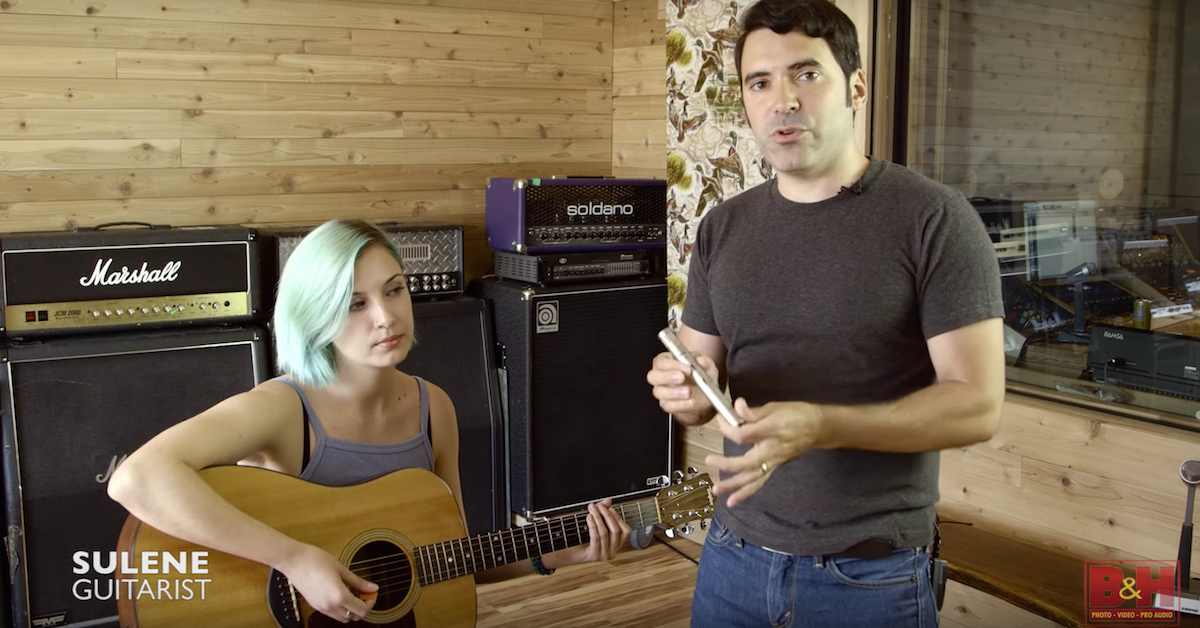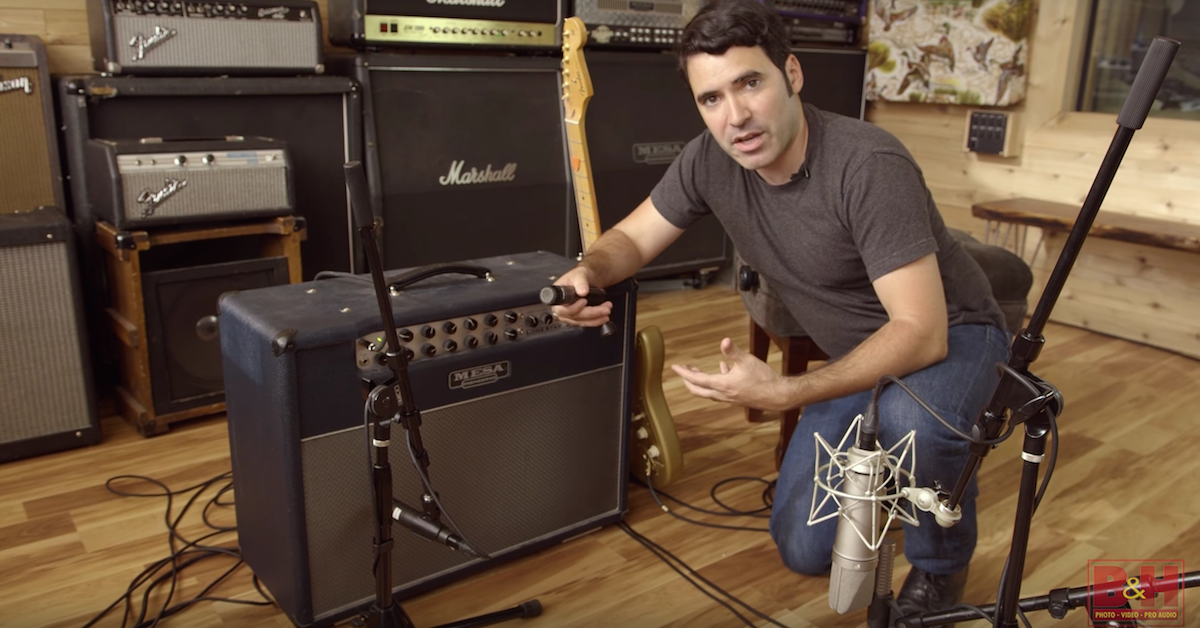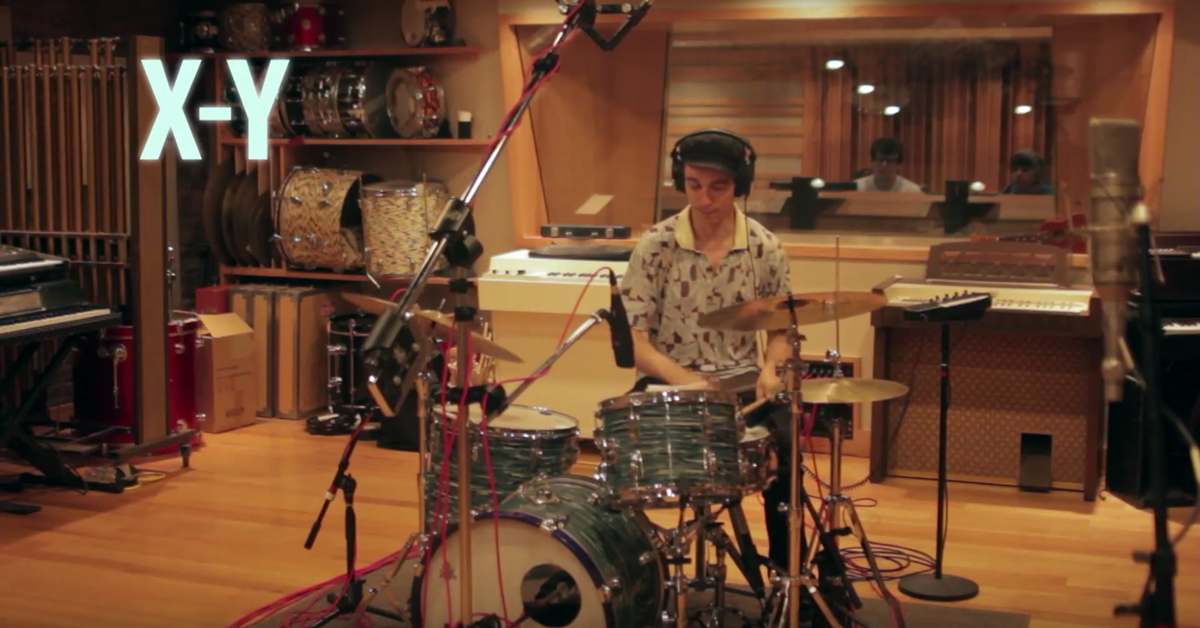How to Record Acoustic Guitar: Multi-Mic Techniques
We’re going to be looking at multi-mic techniques for acoustic guitar today, with a special focus on stereo micing techniques. Stereo mic techniques for acoustic guitar can be great, especially when you’re working in fairly sparse mixes, where the guitar is meant to take up a lot of space, and you want to get a lot of detail and dimension out of the guitar.
We’ve got a great guitarist working with us today. Sulene Van der Walt. Let’s dive right in!
Alright, so for stereo micing acoustic guitars, there’s really two basic approaches. Your spaced pair approach, and your coincident pair approach. Coincident pair means the capsules are almost touching, or are just pretty close together, and some of the most popular methods for the coincident pair are XY, where you have the two capsules at pretty much a 90 degree angle, your ORTF pair where they’re about 110 degrees out and about six or seven inches away from each other at the capsule, and then there’s a fun one called your Mid/Side approach, where one microphone is picking up laterally, and the other is focusing right in on your sound source. We’ll hear each of those styles.
Then there’s your spaced pair approach, which means your kind of coming out like this, and one of these mics are usually going to be focused more on the body of the guitar, and another more on the fingerboard. The fingerboard mic is going to pick up more upper harmonics, more kind of high end clarity, and the one down here is going to be quite a bit warmer and smoother and more bass heavy.
This can be a bit awkward, even though a lot of engineers love this approach. Your right mic generally isn’t going to have as much level coming into it as the left one, so you may have to do some playing around with levels there, and then you’ll also get an image that’s a lot more bass heavy on the left, and a lot more treble heavy on the right.
If you want a slightly less pronounced stereo image, going for the coincident approach will kind of tuck things in a little bit, or one of my favorites, the ORTF approach here can work very nicely.
But there’s another trick that a lot of engineers like, and that is to do your XY, but to do it in a vertical position. This way, you’ll get a bit of a tighter stereo spread, and it’s almost a little bit like a piano with the bass strings on the left, and the high strings on the right.
So again, you’ve got a coincident pair where you can do a vertical approach, which can be very nice if you want a tighter stereo spread, you can do your coincident pairs with a left to right approach, where you get more of the low end sound and body of the guitar on the left, and more of the high end sound of the guitar on the right, or you can go out to a spaced pair.
Spaced pair is probably the most dangerous one to do though, because with your spaced pair, you can end up getting some phase issues and a lack of mono compatibility.
A rule of thumb a lot of engineers swear by is a three to one ratio, so you want to make sure your mics are three times as far apart as they are away from the instrument, and that can potentially help you deal with some phasing issues. We’ll focus mostly on hearing a XY position, which we’ll do in Blumlein style, where we’ll have these in bi-directional mode, picking up more of the room. We’ll do the vertical XY, giving us a tighter stereo spread, and then we’ll try out our Mid/Side patterns, as well as our spaced pair patterns.
Alright, enough of me yakking about it. Let’s hear it!
[acoustic guitar, vertical XY with Neumann U87AIs into an API 3124]
[acoustic guitar, Blumlein with Neumann U87AIs into an API 3124]
[acoustic guitar, Mid/Side with Neumann U87AIs into an API 3124]
[acoustic guitar, spaced pair with Neumann U87AIs into an API 3124]
Thanks for joining us for this installment in our three part series on micing guitars. Make sure you check out the other two parts. This has been Justin Colletti of Sonic Scoop, coming at you from Bronze Studios, courtesy of B&H. Go to sonicscoop.com, check us out there for more videos, go to b&h.com, see you next time!





